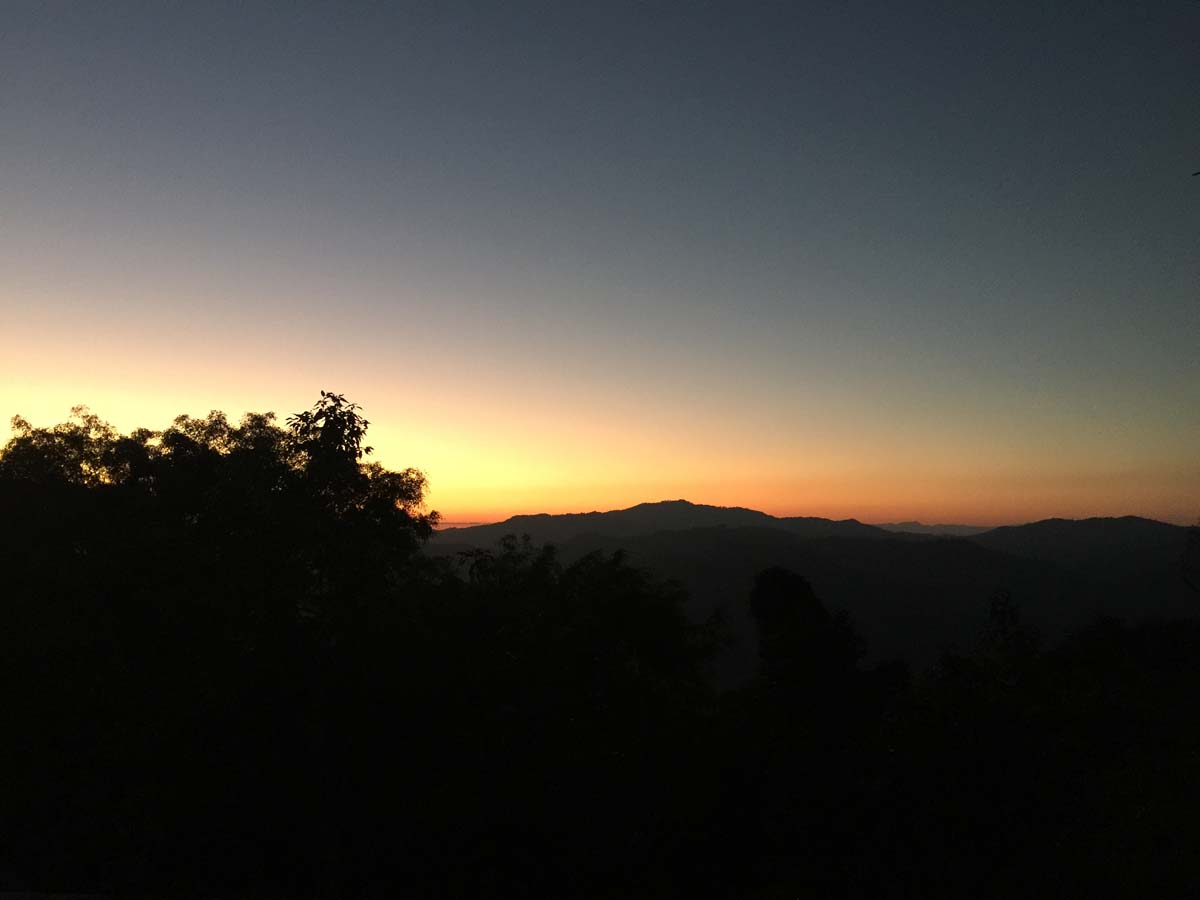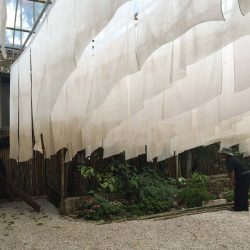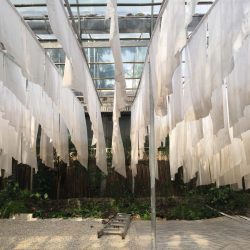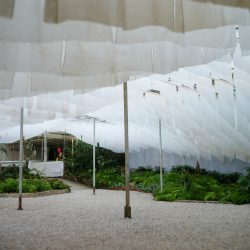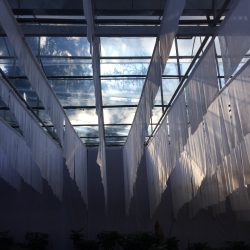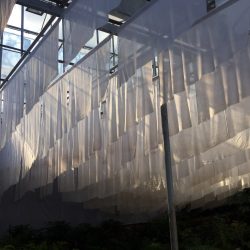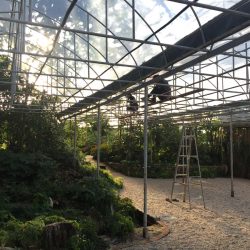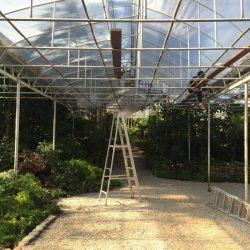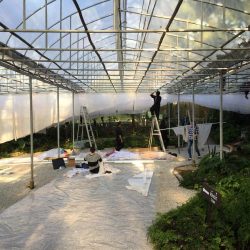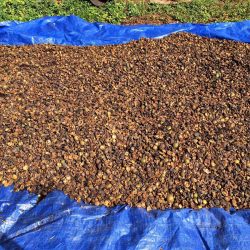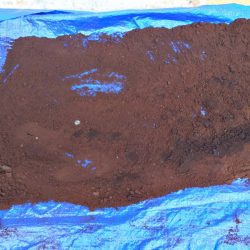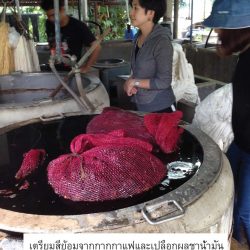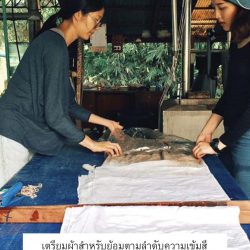‘IN THE MOUNTAIN’ BY SANITAS STUDIO ACTS AS A FORM OF VISUAL LANGUAGE, COMMUNICATING THE SENSE OF ‘DOI TUNG: THE UNFINISHED PROJECT’ AS IT TRACES AND MAKES VISIBLE THE TOPOGRAPHY OF THE LAND AND THE OPPORTUNITIES IT PROVIDES.
Suspended over the rise and fall of the topography of the land, “In the Mountain” moves up the hill almost as if growing in lightness. Furthermore, as it climbs, the installation itself remains in constant motion, succeeding to outline and reference the lives of Doi Tung’s inhabitants and the manner in which their well-being has responded to, followed, and built upon the opportunities this platform they live upon has provided.
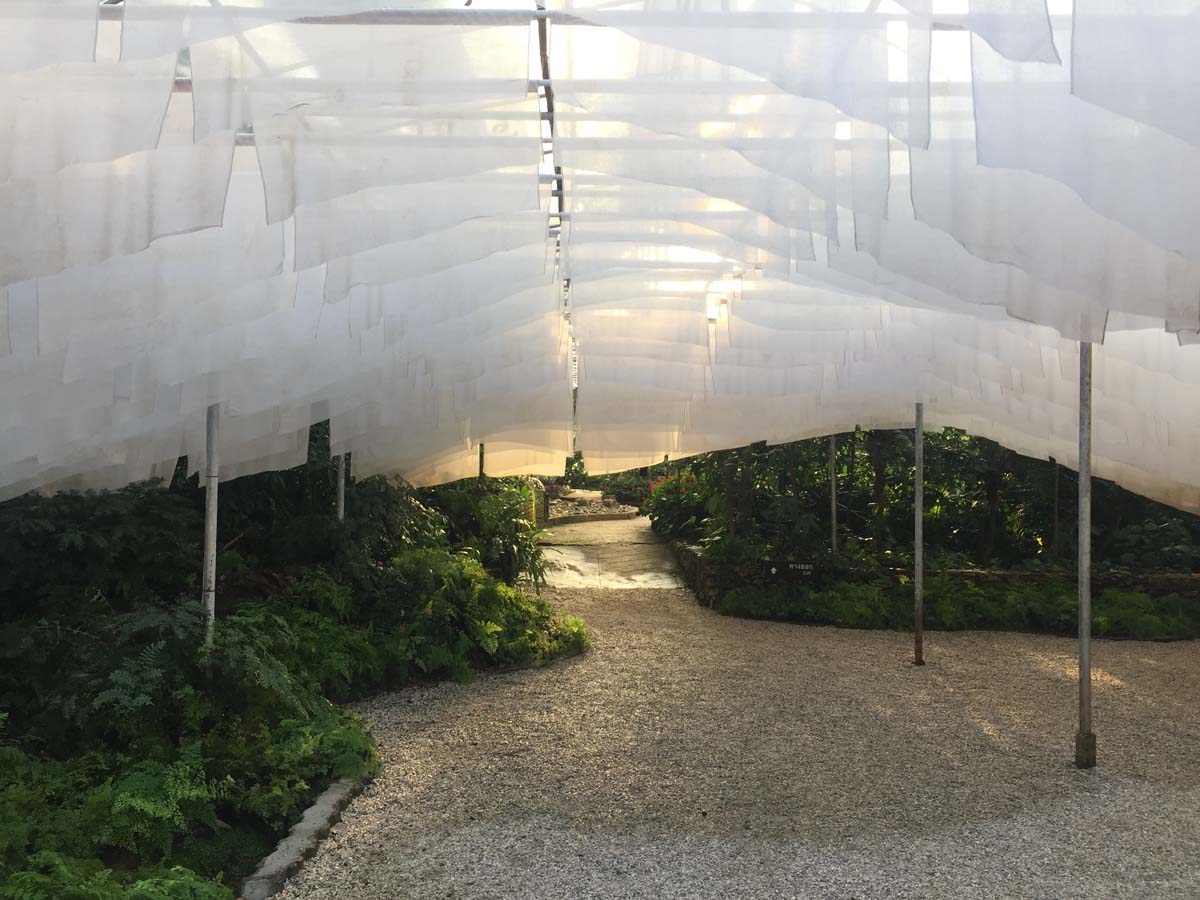
‘In the Mountain’ by Sanitas Studio, Image courtesy of Sanitas Studio
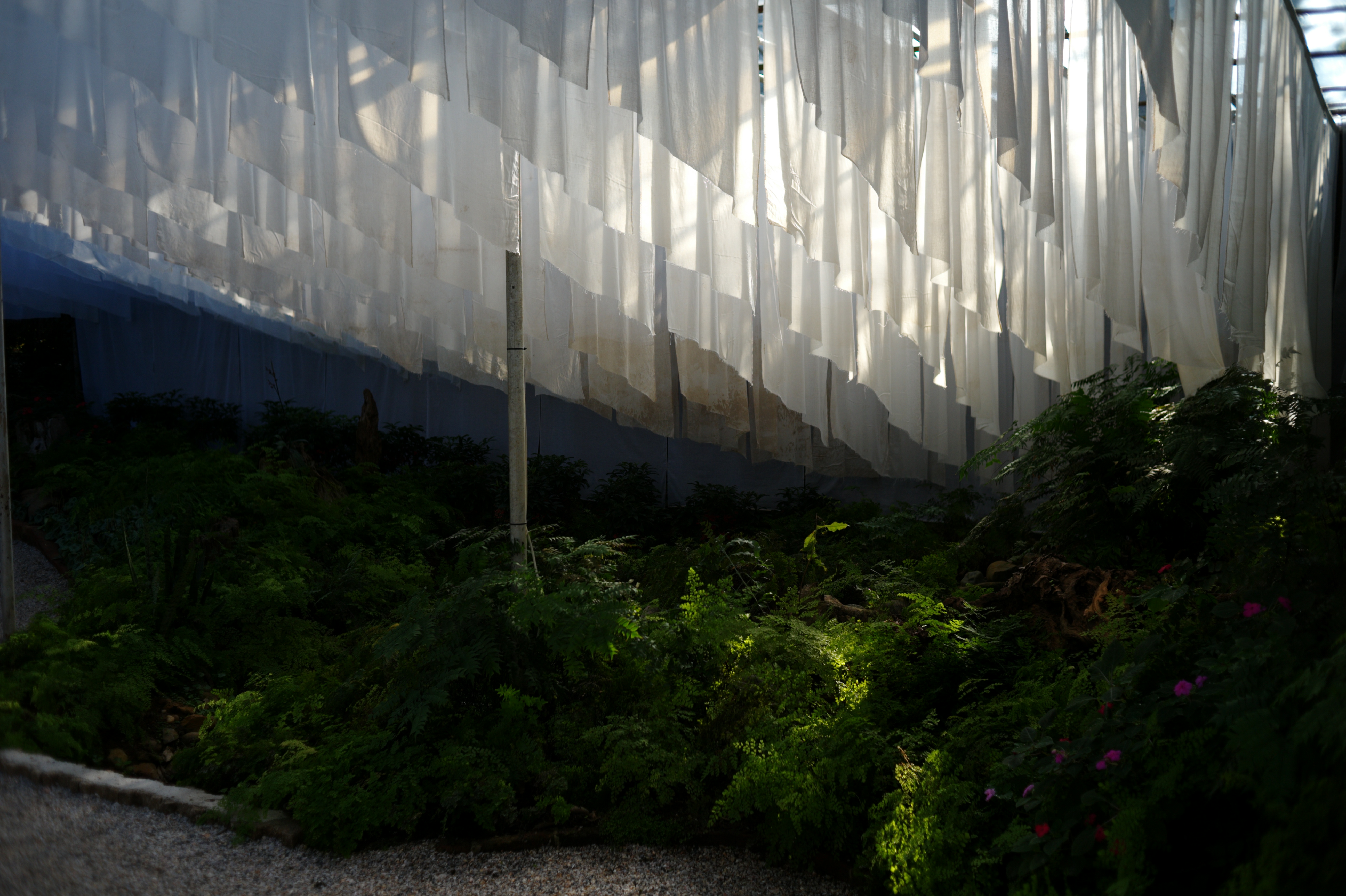
‘In the Mountain’ by Sanitas Studio, Image courtesy of Sanitas Studio
“In July 2016, we were invited to work on an installation for an annual winter festival held at Doi Tung, Chiang Rai,” shared Sanitas Pradittasnee of Bangkok-based Sanitas Studio. “Since then, we began learning what the foundation has been working on and the tremendous improvements it has made since its onset in 1988 to the local people’s lives through its reforestation projects.”

‘In the Mountain’ by Sanitas Studio, Image courtesy of Sanitas Studio
“Helping people to help themselves is the Doi Tung development project’s aim, which allows for people and the forest to coexist in a sustainable way. The reforestation of the area, recreating green hills from bald mountains, is an “Unfinished Project” that needs to be continuously worked upon.”
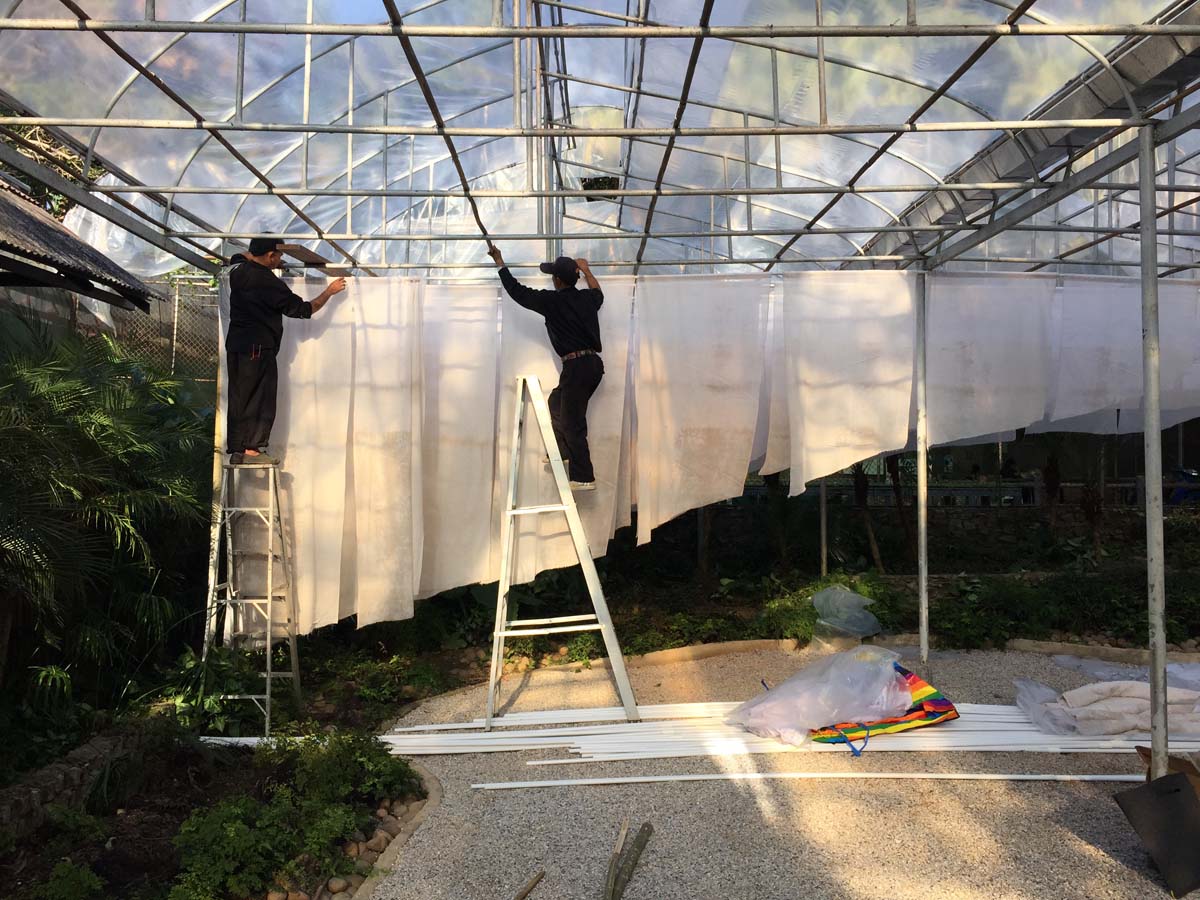
‘In the Mountain’ by Sanitas Studio installation, Image courtesy of Sanitas Studio
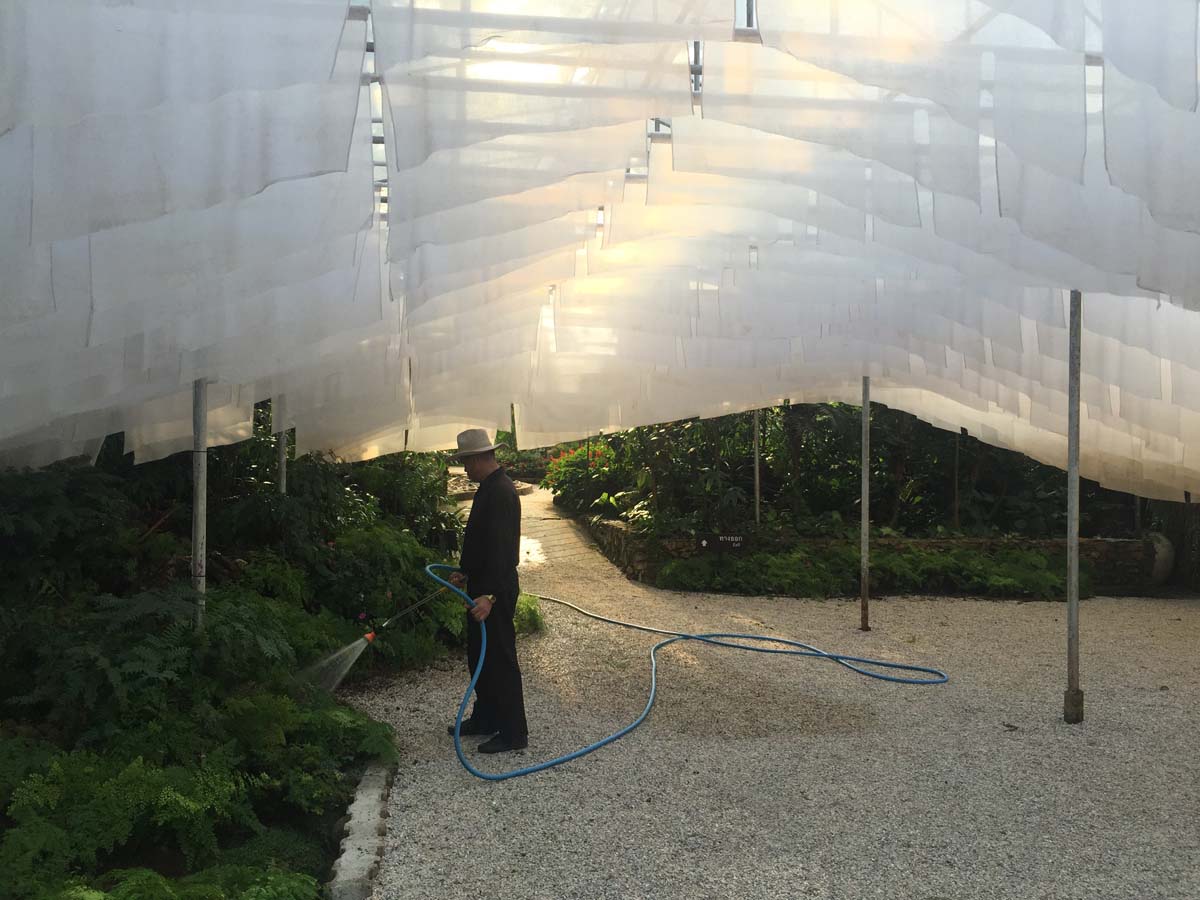
‘In the Mountain’ by Sanitas Studio, Image courtesy of Sanitas Studio
The ‘In the Mountain’ installation is made of fabric with a close connection to the land it hangs above, as each piece is made from ground coffee and the skin of tea oil fruits that are the plant species utilized in the Doi Tung development project that have allowed for the people and the forest to coexist in a sustainable way. “No matter who you are, if you understand the “core” of the project’s concept, you can contribute in a manner that also helps to push sustainability further,” added Sanitas.
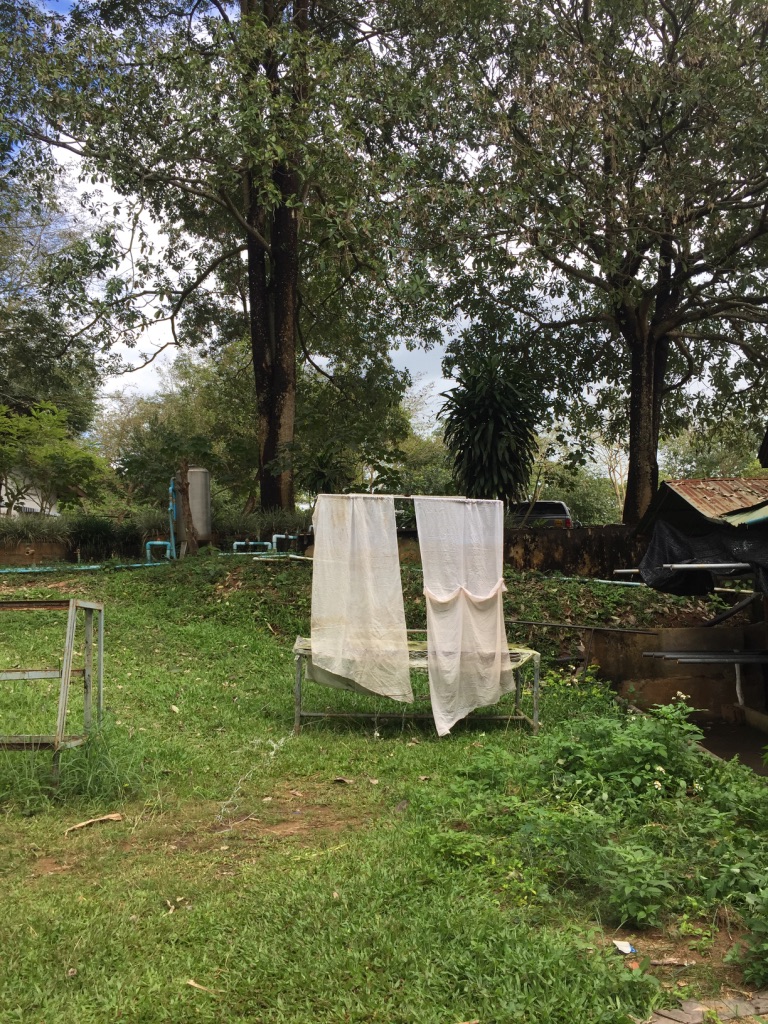
Sanitas Studio’s contribution, ‘In the Mountain’ acts in many ways as a form of visual language, communicating the sense of Doi Tung: The Unfinished Project as it traces and makes visible the negative space of the mountain through its installation, thus allowing for the land to repeat itself through visible recognition of the notion that the ways in which we choose to build upon that which we stand upon can support growth that spans in many more directions than one.
